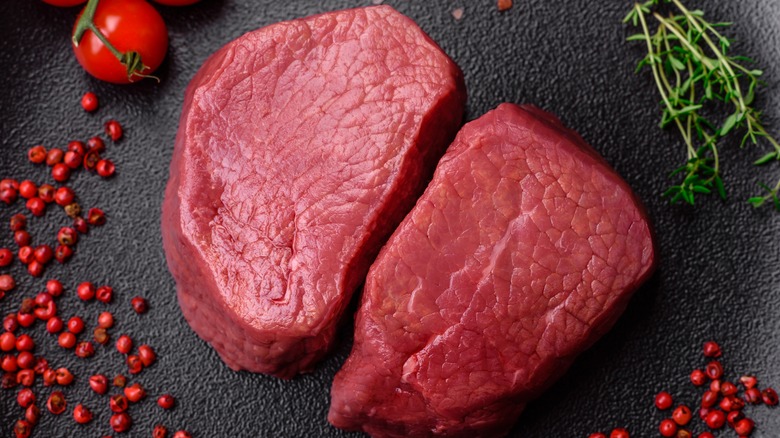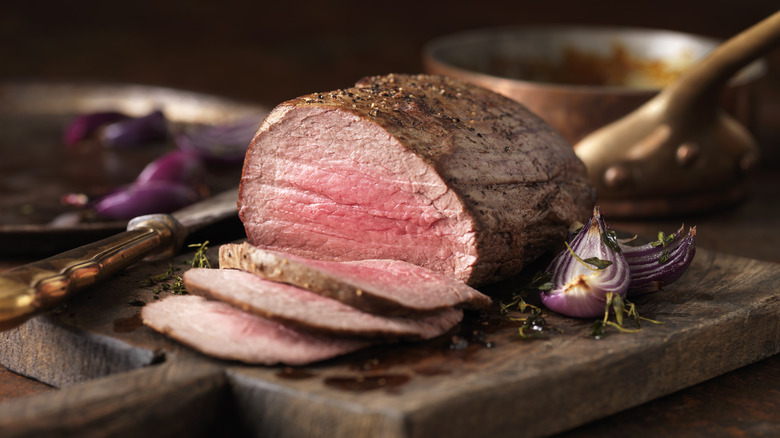The Cuts Of Steak To Opt For If You Want To Go Lean With Protein
If you're hitting the gym and looking to get some lean protein into your diet, you're not short on options. There's everything from the gold standard of protein, eggs, to surprisingly protein-rich veggies, like edamame. But what if you fancy a good, old-fashioned steak? All steaks are great sources of protein, but some are definitely leaner than others. Certain cuts, like the ribeye, are super well marbled (meaning they have a high amount of intramuscular fat). These aren't going to be your friend when you're looking for lean protein. Instead, you'll want to opt for less fatty steaks – look for cuts that are at least 90% lean (according to their label).
The eye of round, also known as the silverside, is just about the leanest cut of steak you can get. It's taken from the animal's rear leg, and while economical, it's packed with flavor. It's best used as a roasting cut — though it lacks the intramuscular fat, it responds well to roasting — and is perfect for something like a French dip or Italian beef sandwich. Another great cut is the sirloin. It's one of the more popular cuts of meat, and it happens to be one of the leanest. It comes from just behind the short rib, and it's a very flavorful, protein-loaded cut packed with rich beefiness — it's a great choice to pair with steak sauces, as they won't be in danger of overpowering it.
How to prepare lean steak
When preparing lean steak, there are a few things you need to consider to make sure you don't end up with tough, chewy meat. Because there's less of that intramuscular fat, these steaks aren't as forgiving as something like a super fatty ribeye or T-bone, so you'll need to take care when cooking them. Marinating your steak is a great option to really make the most of those leaner cuts, especially those like the eye of round, which are on the lower end of the price and quality spectrum. A simple marinade using citrus or vinegar will work wonders, the acid softening the meat and vastly improving its tenderness.
How much connective tissue there is in any given cut should also affect how you cook it. Something like a chuck roast will respond well to slow cooking, breaking down well over time; sirloin, however, won't do quite as well. It prefers a rapid sear or roast for a perfect, rosy, medium rare. It's also important to leave it to adequately rest once you've finished cooking it. It's a step you might be tempted to skip, but many chefs, including the late, great Anthony Bourdain, will tell you it's the most crucial part of a perfect steak. Once it's had a good rest, be sure to slice it against the grain, thereby shortening the muscle fibers and making them softer to chew — this is the last step in ensuring a perfectly tender, delicious, and lean source of protein.


